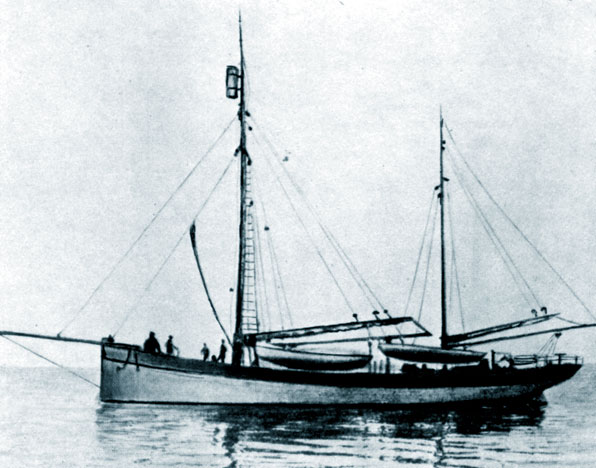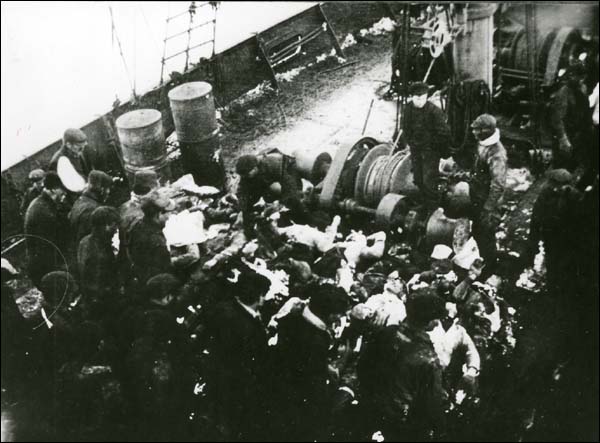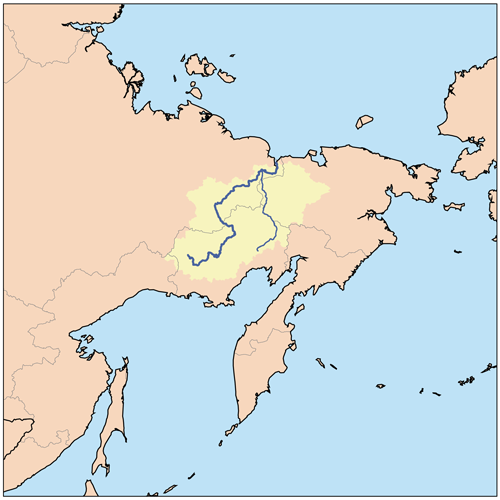|
William Barr (Arctic Historian)
William Barr (born 1940) is a Scottish historian now resident of Calgary, Canada, with a specific interest in the history of exploration of the Arctic, and to a lesser degree, the Antarctic. He holds degrees in Geography from the University of Aberdeen, Scotland and McGill University, Montreal, Canada. From 1968 until 1999 he was a member of the faculty of the Department of Geography, University of Saskatchewan, Saskatoon, Canada and is now a professor emeritus there. Since 1999 he is a Research Fellow in residence at the Arctic Institute of North America, University of Calgary. For the past 30 years the history of the exploration of the Arctic has been the focus of his research. He has published 16 books, including translations from French, German, and Russian. In 2006, William Barr received a Lifetime Achievement Award for his contributions to the recorded history of the Canadian North from the Canadian Historical Association. Most of the titles of his works show that Willia ... [...More Info...] [...Related Items...] OR: [Wikipedia] [Google] [Baidu] |
Scottish People
The Scots ( sco, Scots Fowk; gd, Albannaich) are an ethnic group and nation native to Scotland. Historically, they emerged in the early Middle Ages from an amalgamation of two Celtic-speaking peoples, the Picts and Gaels, who founded the Kingdom of Scotland (or ''Alba'') in the 9th century. In the following two centuries, the Celtic-speaking Cumbrians of Strathclyde and the Germanic-speaking Angles of north Northumbria became part of Scotland. In the High Middle Ages, during the 12th-century Davidian Revolution, small numbers of Norman nobles migrated to the Lowlands. In the 13th century, the Norse-Gaels of the Western Isles became part of Scotland, followed by the Norse of the Northern Isles in the 15th century. In modern usage, "Scottish people" or "Scots" refers to anyone whose linguistic, cultural, family ancestral or genetic origins are from Scotland. The Latin word ''Scoti'' originally referred to the Gaels, but came to describe all inhabitants of Scotland. Cons ... [...More Info...] [...Related Items...] OR: [Wikipedia] [Google] [Baidu] |
Lenin (1916 Icebreaker)
''Lenin'' (russian: Ленин) was a Russian icebreaker originally built in England for the Russian Empire. Launched in 1916, before going into service for Russia, the ship first served in the Royal Navy during the Allied intervention in the Russian Civil War. It was eventually acquired by the Soviet Union and served through World War II, and was finally scrapped in 1977. Ship history The ship, ordered by the Russian Empire, was laid down in June 1916 by Armstrong Whitworth at Newcastle upon Tyne as the ''St. Alexander Nevsky'', after Russian statesman and military hero Alexander Nevsky. Her construction was supervised by Russian naval architect and author Yevgeny Zamyatin. (updates articles by Myers published in ''Slavonic and East European Review'') The ship was launched on 23 December 1916, and completed in June 1917. By then though the Russian Empire had ceased to exist following the February Revolution, and the ship was requisitioned by the Royal Navy and commissioned as ... [...More Info...] [...Related Items...] OR: [Wikipedia] [Google] [Baidu] |
Aleksandr Kolchak
Alexander Vasilyevich Kolchak (russian: link=no, Александр Васильевич Колчак; – 7 February 1920) was an Imperial Russian admiral, military leader and polar explorer who served in the Imperial Russian Navy and fought in the Russo-Japanese War of 1904–1905 and the First World War. During the Russian Civil War of 1917–1922 he established an anti-communist government in Siberia — later the Provisional All-Russian Government — and became recognized as the "Supreme Leader and Commander-in-Chief of All Russian Land and Sea Forces" by the other leaders of the White movement from 1918 to 1920.Jon Smele (2006) ''Civil War in Siberia: The Anti-Bolshevik Government of Admiral Kolchak, 1918–1920'', Cambridge University Press, . p.77 His government was based in Omsk, in southwestern Siberia. For nearly two years, Kolchak served as Russia's internationally recognized head of state. However, his efforts to unite the White Movement failed; Kolchak refused t ... [...More Info...] [...Related Items...] OR: [Wikipedia] [Google] [Baidu] |
Northern Sea Route
The Northern Sea Route (NSR) (russian: Се́верный морско́й путь, ''Severnyy morskoy put'', shortened to Севморпуть, ''Sevmorput'') is a shipping route officially defined by Russian legislation as lying east of Novaya Zemlya and specifically running along the Russian Arctic coast from the Kara Sea, along Siberia, to the Bering Strait. To be more precise, The Northern Sea Route crosses the seas of the Arctic Ocean (Kara Sea, Laptev Sea, East Siberian Sea, and Chukchi Sea). Administratively, in the west the NSR is bounded by the western entrances to the Novaya Zemlya straits and by the meridian running north from Cape Zhelaniya, and in the east, in the Bering Strait, it is bounded by the parallel of 66 ° N and the meridian of 168 ° 58′37 ″ W. The entire route lies in Arctic waters and within Russia's exclusive economic zone (EEZ). Parts are free of ice for only two months per year. The overall route on Russia's side of the Arctic between No ... [...More Info...] [...Related Items...] OR: [Wikipedia] [Google] [Baidu] |
Vladimir Rusanov
Vladimir Alexandrovich Rusanov (russian: Влади́мир Алекса́ндрович Руса́нов; – ca. 1913) was a Russian geologist and Arctic explorer. Early life Rusanov was born in a merchant's family in Oryol, Russia. His early life was marred by hardship when his father went bankrupt before dying while Rusanov was still a child. Rusanov's widowed mother struggled to bring up the family but managed to send her son to the Oryol Gymnasium (Grammar School). Rusanov however began to be involved with Marxist revolutionaries. He was arrested by the police who while they could not prove anything informed the gymnasium leading to his expulsion. Rusanov therefore joined a theological seminary. Rusanov entered the natural sciences faculty at Kiev University in 1897. At Kiev he was involved in Marxist activities and was again expelled and briefly imprisoned. While in jail he was inspired by books about Fridjtof Nansen's Arctic voyages and resolved to become a polar explorer ... [...More Info...] [...Related Items...] OR: [Wikipedia] [Google] [Baidu] |
Sibiryakov (1909 Icebreaker)
''Alexander Sibiryakov'' (Russian ''Александр Сибиряков'') was a steamship that was built in Scotland in 1909 as ''Bellaventure'', and was originally a seal hunting ship in Newfoundland. In 1917 the Russian government bought her to be an icebreaker. She served the RSFSR and Soviet Union until 1942, when she was sunk by enemy action. The ship gave notable service in the Russian Arctic during the 1930s. The ship was recorded as ''Bellaventure'' until at least 1920. By 1927 she had been renamed ''Александр Сибиряков''. In the Latin alphabet her name was rendered ''Alexander Sibiriakov'' until at least 1935. This had been changed to ''Alexander Sibiryakov'' by 1939. Building In 1908 A Harvey & Co of St John's, Newfoundland ordered a pair of ships from shipbuilders in Glasgow, Scotland. D&W Henderson Ltd built ''Bellaventure'', launching her on 23 November 1908. Napier and Miller built her sister ship ''Bonaventure'', launching her on 5 December ... [...More Info...] [...Related Items...] OR: [Wikipedia] [Google] [Baidu] |
Severnaya Zemlya
Severnaya Zemlya (russian: link=no, Сéверная Земля́ (Northern Land), ) is a archipelago in the Russian high Arctic. It lies off Siberia's Taymyr Peninsula, separated from the mainland by the Vilkitsky Strait. This archipelago separates two marginal seas of the Arctic Ocean, the Kara Sea in the west and the Laptev Sea in the east. Severnaya Zemlya was first noted in 1913 and first charted in 1930–32, making it the last sizeable archipelago on Earth to be explored. Administratively, the islands form part of Russia's Krasnoyarsk Krai. In Soviet times there were a number of research stations in different locations, but currently there are no human inhabitants in Severnaya Zemlya, except for the Prima Polar Station near Cape Baranov. The largest glacier in the Russian Federation, the Academy of Sciences Glacier, is located in Severnaya Zemlya. The archipelago is notable as well in connection with the ongoing multiyear Arctic sea ice decline. Until recently, ic ... [...More Info...] [...Related Items...] OR: [Wikipedia] [Google] [Baidu] |
Kolyma
Kolyma (russian: Колыма́, ) is a region located in the Russian Far East. It is bounded to the north by the East Siberian Sea and the Arctic Ocean, and by the Sea of Okhotsk to the south. The region gets its name from the Kolyma River and mountain system, parts of which were not accurately mapped by Russian surveyors until 1926. Today the region consists roughly of the Chukotka Autonomous Okrug and the Magadan Oblast. The area, part of which is within the Arctic Circle, has a subarctic climate with very cold winters lasting up to six months of the year. Permafrost and tundra cover a large part of the region. Average winter temperatures range from (even lower in the interior), and average summer temperatures, from . There are rich reserves of gold, silver, tin, tungsten, mercury, copper, antimony, coal, oil, and peat. Twenty-nine zones of possible oil and gas accumulation have been identified in the Sea of Okhotsk shelf. Total reserves are estimated at 3.5 billion tons ... [...More Info...] [...Related Items...] OR: [Wikipedia] [Google] [Baidu] |
Arctic Aviation
Polar aviation refers to aviation in the polar regions of the Earth. Specifically, one may speak of Arctic aviation and Antarctic aviation in the Arctic and Antarctic respectively. The major factors which define the character of polar aviation include remoteness from major populated areas, specific physical geography and climate. Specific factors include low temperatures, frequent changes of meteorological conditions, polar night, the uncertainty of magnetic compasses, difficulties in radio communication, and lack of landmarks. Early history The dream of air travel to the Pole has a lengthy prehistory. As early as the 1870s, John Powles Cheyne, a veteran of three British Arctic expeditions, was proposing a voyage to the pole via balloon. Nevertheless, in terms of actual flight, S. A. Andrée's Arctic balloon expedition of 1897 is commonly considered to mark the beginning of polar aviation. Later, Zeppelins were used for exploitation of the Arctic, and eventually airplanes. In 1914, ... [...More Info...] [...Related Items...] OR: [Wikipedia] [Google] [Baidu] |
Jan Nagórski
Alfons Jan Nagórski (1888–1976), also known as ''Ivan Iosifovich Nagurski'', was a Polish engineer and pioneer of aviation, the first person to fly an airplane in the Arctic and the first aviator to perform a loop with a flying boat. Biography Early life Jan Nagórski was born on January 27, 1888, in Włocławek, Russian Empire. He completed a local trade school and in 1909 graduated from an infantry junker school in Odessa and the All-Russian Aeroclub in 1912. The following year he accomplished his training at the Naval Engineering School in Gatchina near St. Petersburg where he earned his wings. He was among the first pilots of the Imperial Russian Navy. Career In 1914 Nagórski was tasked with the difficult mission of locating the expedition of Georgy Sedov, Georgy Brusilov, and Vladimir Rusanov in the Russian Arctic. In a Maurice Farman MF11 plane, specially purchased for that purpose in France, Nagórski embarked on a ship in Arkhangelsk and arrived to Novaya Zemly ... [...More Info...] [...Related Items...] OR: [Wikipedia] [Google] [Baidu] |
Russian Imperial Navy
The Imperial Russian Navy () operated as the navy of the Russian Tsardom and later the Russian Empire from 1696 to 1917. Formally established in 1696, it lasted until dissolved in the wake of the February Revolution of 1917. It developed from a smaller force that had existed prior to Tsar Peter the Great's founding of the modern Russian navy during the Azov campaigns (1695–1696), Second Azov campaign in 1696. It expanded in the second half of the 18th century and reached its peak strength by the early part of the 19th century, behind only the British and French fleets in terms of size. The Imperial Navy drew its officers from the aristocracy of the Empire, who belonged to the state Russian Orthodox Church. Young aristocrats began to be trained for leadership at a national naval school. From 1818 on, only officers of the Imperial Russian Navy were appointed to the position of Chief Manager of the Russian-American Company, based in Russian America (present-day Alaska) for coloniz ... [...More Info...] [...Related Items...] OR: [Wikipedia] [Google] [Baidu] |
Otto Sverdrup
Otto Neumann Knoph Sverdrup (31 October 1854, in Bindal, Helgeland – 26 November 1930) was a Norwegian sailor and Arctic explorer. Early and personal life He was born in Bindal as a son of farmer Ulrik Frederik Suhm Sverdrup (1833–1914) and his wife Petra Neumann Knoph (1831–1885). He was a great-grandnephew of Georg Sverdrup and Jacob Liv Borch Sverdrup, first cousin twice removed of Harald Ulrik Sverdrup (politician), Harald Ulrik and Johan Sverdrup, second cousin once removed of Jakob Sverdrup (politician), Jakob, Georg Sverdrup (theologian), Georg and Edvard Sverdrup, third cousin of Georg Johan Sverdrup, Georg Johan, Jakob Sverdrup (philologist), Jakob, Mimi Sverdrup Lunden, Mimi, Leif J. Sverdrup, Leif and Harald Sverdrup (oceanographer), Harald Ulrik Sverdrup. He was a brother-in-law of Johan Vaaler, and Otto himself married his own first cousin, Gretha Andrea Engelschiøn (1866–1937), in October 1891 in Oslo, Kristiania. Their daughter Audhild Sverdrup (1893– ... [...More Info...] [...Related Items...] OR: [Wikipedia] [Google] [Baidu] |







